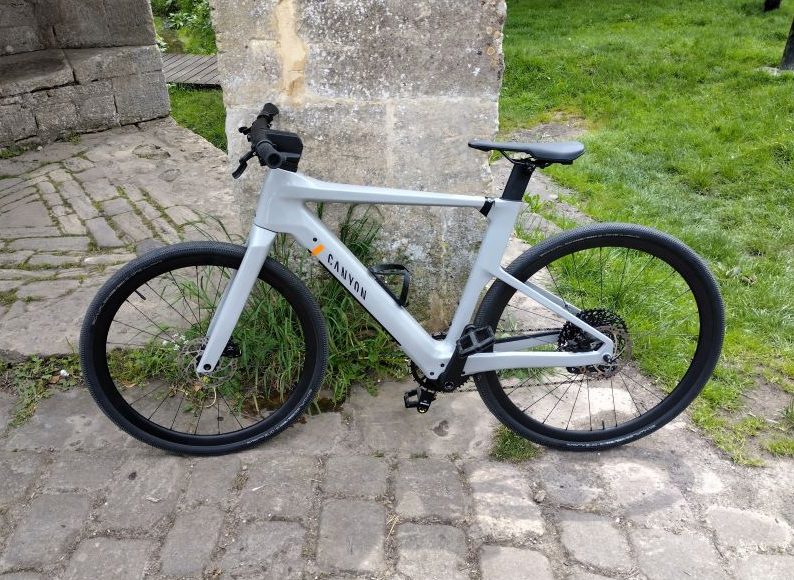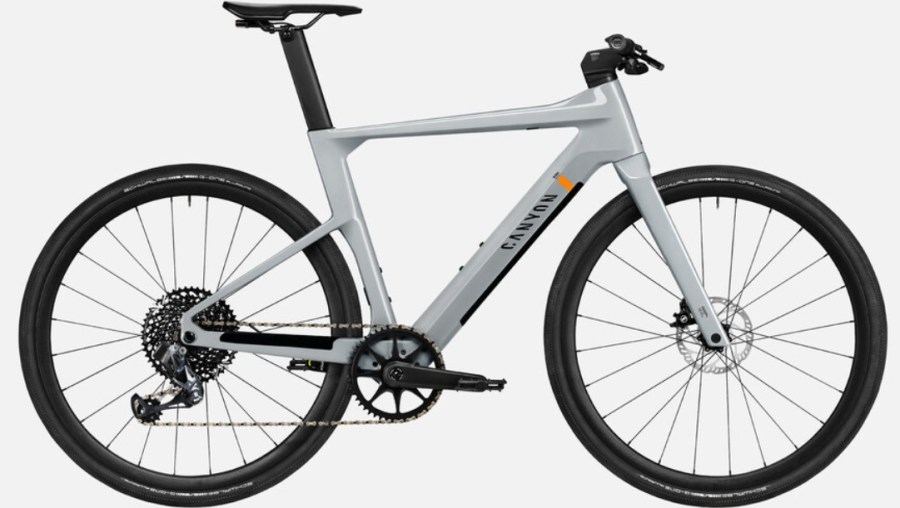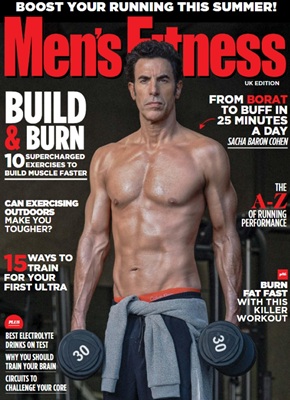Canyon Roadlite:ON CF 9 Ltd review: With electronic shifting, lightweight carbon frame and an 80km range, the CF 9 is built for speed and stamina…
Canyon Roadlite:ON CF 9 Ltd
BUY IT NOW:
Available in September, canyon.com
Pros:
- Ultra-lightweight carbon fibre body
- A great ride even with assistance off
- Good range
Cons:
- Expensive
- Limited off-road
- No panier rack
Weight: 5/5
Power: 5/5
Range: 4.5/5
OVERALL: 4.5/5
The Roadlite:ON CF 9 Ltd is a lightweight, flat-bar electric road bike, perfect for riders who want a stylish ride for the daily commute or a fun weekend runaround. It’s equipped with SRAM’s 12-speed, wireless Eagle AXS gearing and a powerful 450W FAZUA drive unit powered by a removable 430Wh battery. The Roadlite:ON is expensive, even for one of the best electric bikes, but you do get a lot for your money.
Canyon Roadlite:ON CF 9 Ltd weight
Weighing just 31.9lb / 14.45kg, the bike is noticeably light and can be carried with ease. So it’s an attractive option for city riders contending with staircases or train commutes. With the battery removed the bike comes in at around 12kg. Although on the heavy side for a road bike, it’s light enough to take out on a unpowered weekend ride without the battery.
The bike comes with SRAM’s high-end Eagle AXS 12-speed wireless electronic gearing. That alone could add up to £2,000 onto the cost of bike, so puts its overall price into perspective. As you’d expect for the price, the shifting is smooth, crisp and trouble free. I was able to glide through the full range and back down effortlessly.
On steep hills, the combination of electronic shifting and the FAZUA motor came into its own. It was more than being simply driven up the hill, feeling much more of an interactive experience.

Canyon Roadlite:ON CF 9 Ltd motor
The 450W FAZUA motor has three modes to choose from: breeze, river and rocket. These are incremental in terms of both output and battery life. Breeze is the perfect mode for those wanting an extra ‘nudge’ on a long-distance ride. River hits the sweet spot between giving a little more oomph and allowing you to go a solid distance.
With the assistance in rocket mode, riding the bike was a dream. There was no discernible difference to riding on the flat, even on the steepest hill. I managed to weave easily through standing traffic up a busy incline. Again, the motor always felt intuitive – part of the ride rather than a motor which simply kicks in as you peddle.
Canyon claims the 430Wh battery can last up to 50 miles / 80km. It was more than enough for a 30-mile / 50km hilly round trip, without having to consciously save the battery. In fact, on the return 15 miles / 25km I rode a lot of the journey on ‘Rocket’ and still had battery left when I returned. With a charging time of around an hour, it would be possible to ride even greater distanced than 50 miles / 80km, topping up the battery over a lunch break.
Canyon Roadlite:ON CF 9 Ltd components
The Magura Cockpit integrated breaks (MCi) are hidden inside the bike. Being hydraulic there’s no need for cabling and as everything is inside the bike frame there’s less chance of wear or damage. A nice touch is the integrated brake light which warns those behind you that you are coming to a stop. Considering how ultra-responsive the disc brakes are, that’s a useful safety feature.
There’s one bottle cage already fitted and room for another. There’s also the option to attach your phone to the handlebars for navigation or for using the FAZUA app. The lights are integrated, so no need for extra batteries or to dismount to turn them on.
Disadvantages
Like much of the Canyon range, the bike is not compatible with a pannier rack or child seat. And while the aero seat no doubt gives a marginal gain on a track, for a city rider it prevents the use of a child seat or trailer. Still, Canyon probably didn’t have such utilitarian aspects in mind when designing the Roadlite:ON. It’s not much use on rougher surfaces either, but again that’s not really the bike’s purpose.
Canyon describes the Roadlite:ON CF 9 Ltd as an e-bike for fitness. Whilst that might sound like a contradiction in terms, it does go some way to describe the fully integrated drive system and the overall riding experience of the bike. You can put in as much or as little effort as you wish but at no time does it feel as if you’re cheating or allowing the motor to do all the work (even when it makes mincemeat of the steepest hill).
It would be an ideal bike to replace a second car for those short and medium sized commutes. The only drawback is the lack of any carrying capabilities. Though perhaps that’s also one of its selling points – it’s a bike built for pure enjoyment; a Ferrari rather than a Ford Focus.
Related content:









